Research Your Motor: Cost and Carbon Benefits of Getting a More Efficient Car
Introduction – Benefits Of More Efficient Cars
Driving a car with better fuel economy can both save you money and cut carbon. This article is to help you understand the benefits of more efficient cars and the full set of carbon emissions associated with driving your car. Driving is typically one of the activities that we do that causes the most emissions. For example, for the average American, it’s around five tons per person, which is close to a quarter of the total personal footprint.
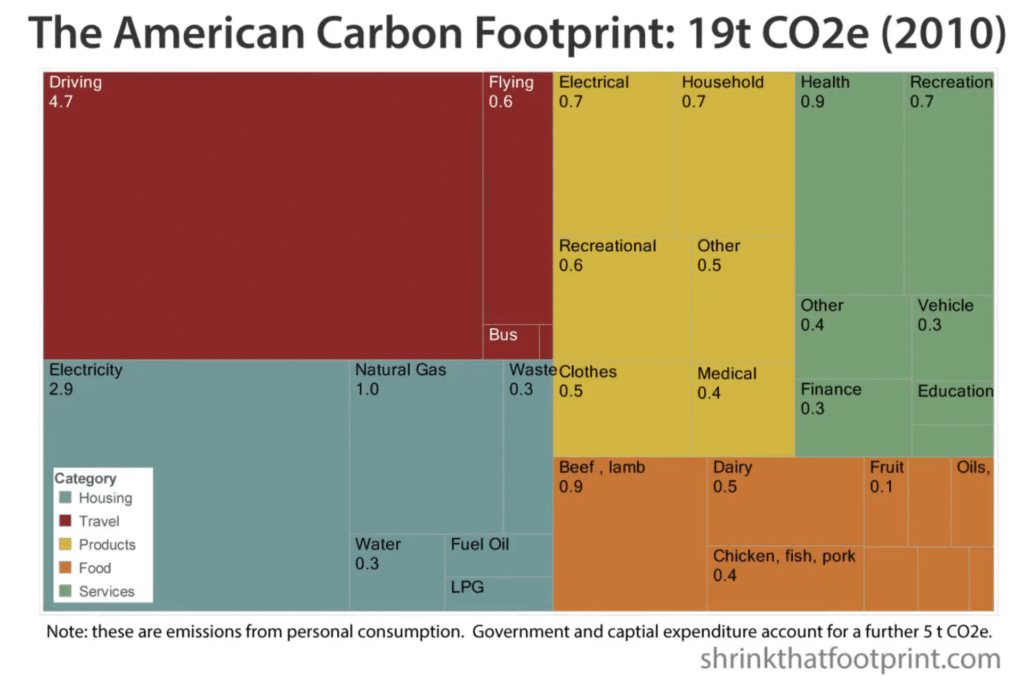
Tailpipe Emissions Are Not Enough To Calculate Benefits Of More Efficient Cars
When you buy a car these days, it normally has an emission rating like grams of CO2 per kilometer driven. Now these are great for comparing different cars and you want to go for the lowest one possible in the type of car you’re after, but they aren’t really that representative of real world emissions because they only consider tailpipe emissions and they’re based on test cycles, not real-world fuel economy.
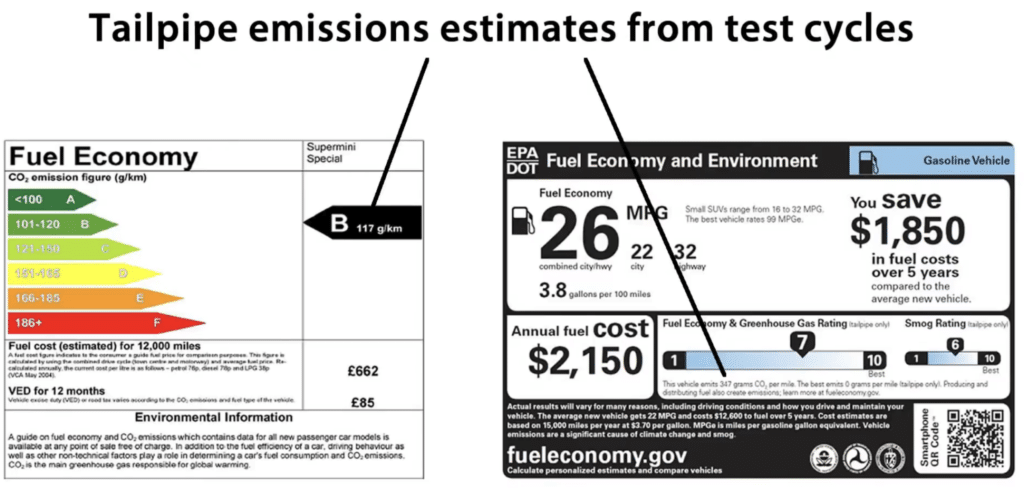
Best Way to Caculate Emissions: Consider the Car Life Cycle
To help you understand how your car stacks up in terms of carbon emissions, I’ve put together a few little graphics that explain how carbon emissions from a car are related to its real-world fuel economy. To fully understand the car’s carbon emissions, you want to consider the emissions from manufacturing the car, combusting the gasoline, and then also producing that gasoline.
For a 30 mile per gallon car, it drops down to 257 grams CO2 per kilometer. Lower for a 40 mile per gallon car, and even better for our top hybrid. We can do something similar for an electric car which isn’t great using coal, much better using gas, and even better using low carbon electricity. You can work out how carbon intensive your own driving is if you can get a decent estimate of the real world fuel economy you get in day-to-day driving.
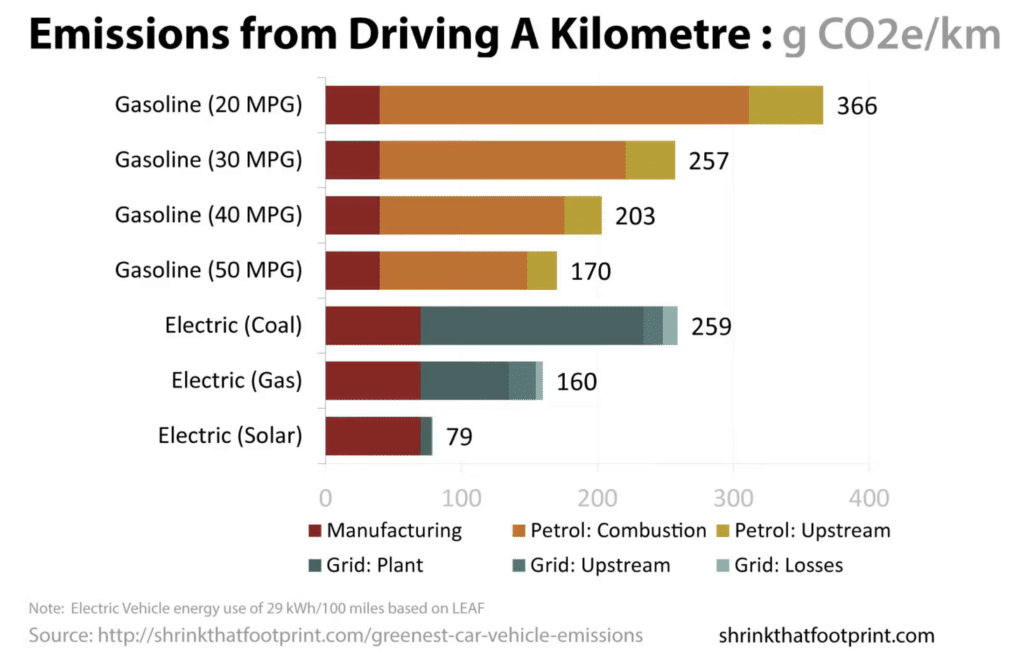
If you have a modern car, your computer will give you a very good estimate of your fuel economy. If you don’t have that, you can always do an old-school estimate. Fill your car up, measure how many kilometers it’s driven, and then next time you fill the tank, check the usage in terms of fuel. Divide by the kilometers driven, and do that over the course of three tanks. You can also use a chart to convert your fuel economy to an emissions estimate.
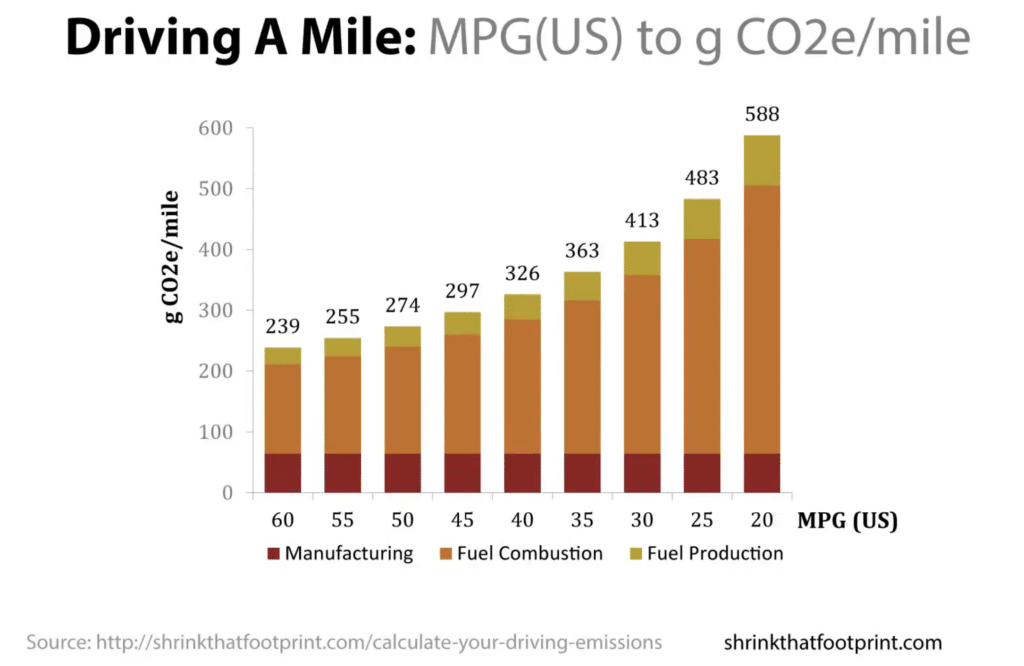
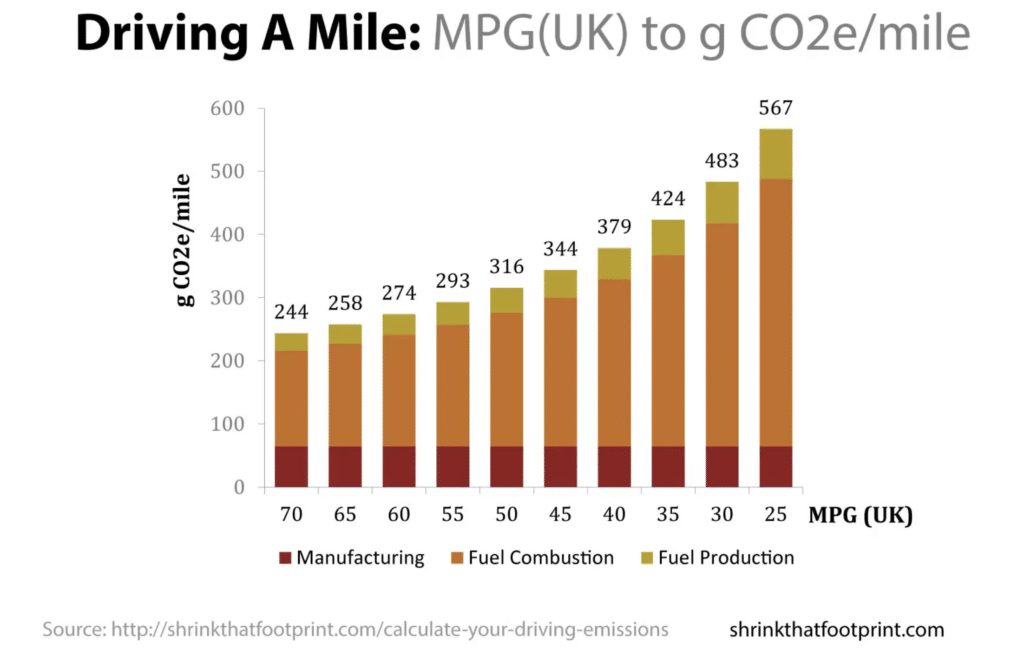
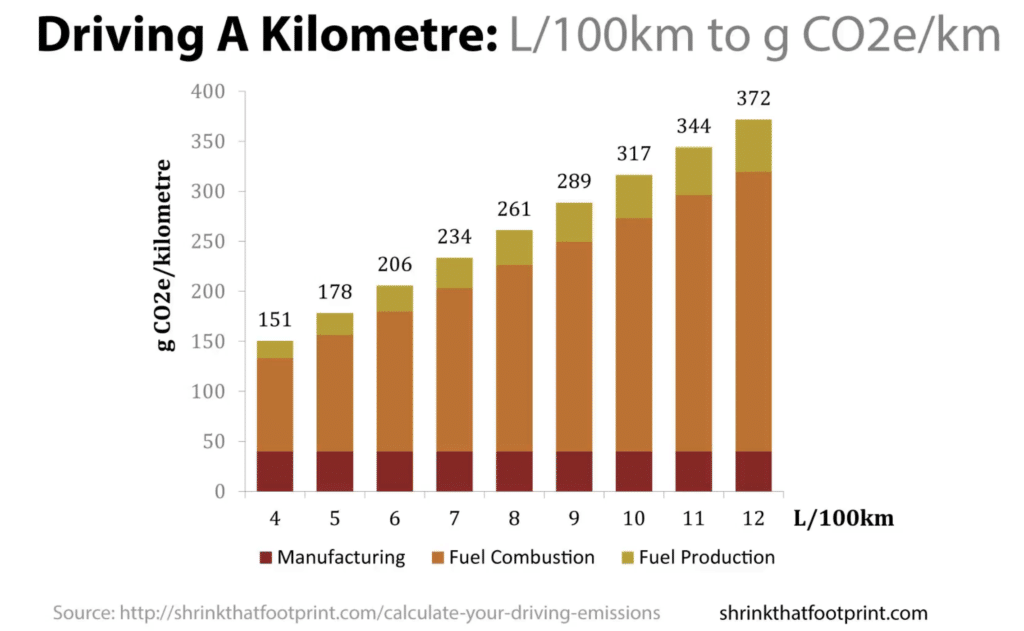
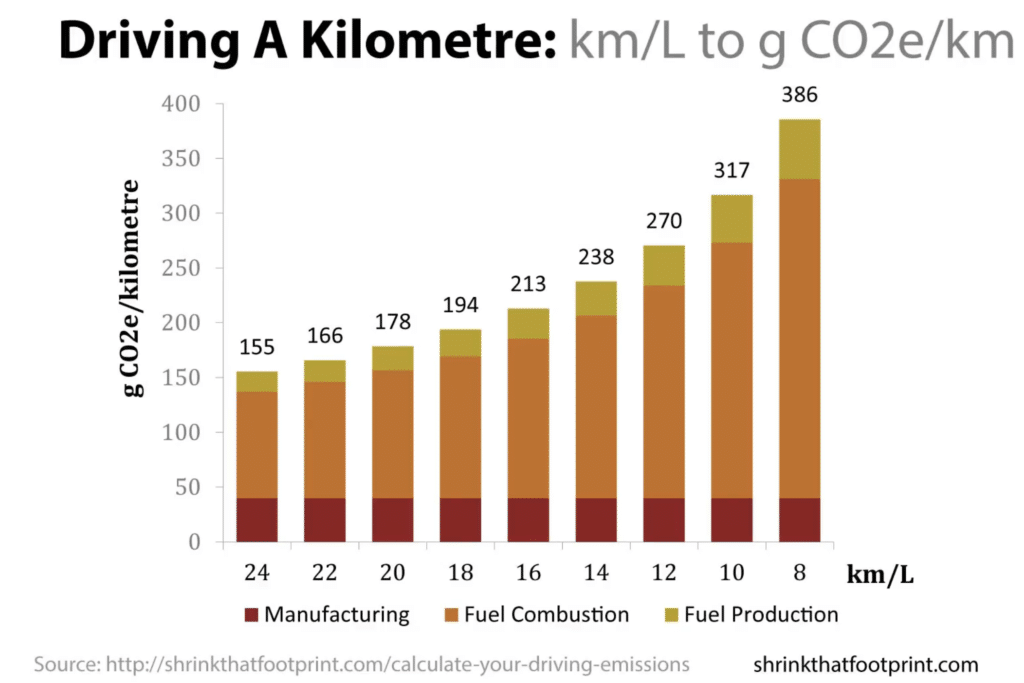
Real World Example of Carbon Savings From Increased Efficiency
Finally, I’m just going to give you one real world example based on an American family driving 15,000 miles per year. This graph shows the benefits that a family would get from changing from something like a 25 mile per gallon Camry to a 50 mile per gallon Prius – the fuel savings would be over a thousand dollars – from 2,100 dollars down to 1,050 dollars each year – and the carbon saving would be over three tons!
Cars With Zero Operating Emissions
The emissions from electric cars come from the production and disposal of the batteries, as well as the electricity used to charge them. Additionally, if electricity is generated from fossil fuels, such as coal, then there will be emissions associated with the electricity.
Truly zero emission cars bypass electricity and use solar directly for power. These cars are known as solar cars and they typically use photovoltaic (PV) cells to directly convert solar energy into electricity to power the car. Solar cars are considered to be zero-emission vehicles, as they do not produce any emissions while in operation.
There are not many of them. Aptera unveiled a solar-only car in 2022 with the drawback that a full days-worth of charging gives very little range. The car also isn’t in production yet but you can make reservations like people have done with Tesla.
Unusual Electric Cars
While the majority of consumer electric cars focus on practicality and affordability, there exists a niche market of specialty EVs that, although fascinating, will likely have limited impact on the overall car economy. One such example is the Aspark Owl, a high-performance electric hypercar that boasts staggering acceleration and top speeds. With its sleek design and cutting-edge technology, the Owl is an engineering marvel that showcases the potential of electric powertrains.
However, its astronomical price tag and limited production numbers mean that it will remain a rare sight on the roads, catering to a select few automotive enthusiasts. While vehicles like the Aspark Owl may capture our imaginations and push the boundaries of electric vehicle technology, their influence on the broader market will be minimal, as the majority of consumers continue to prioritize more accessible and affordable electric options.
Don’t Rush Out And Buy A New Car
Now this article was about the benefits of more efficient cars but wasn’t about rushing out and buying a new car. A new car entails massive production emissions. It’s better to keep driving your current car to about its end-of-life, which is estimated to be 150,000 miles for modern cars.
This article is more about being aware of the fuel emissions and fuel costs that you lock in when you change cars. So if you do change cars in the future, it’s worth considering that a car with really high fuel economy or an electric car or a hybrid will really save you a lot in terms of both carbon and in terms of cost. That’s it for today.
Lindsay Wilson
I founded Shrink That Footprint in November 2012, after a long period of research. For many years I have calculated, studied and worked with carbon footprints, and Shrink That Footprint is that interest come to life.
I have an Economics degree from UCL, have previously worked as an energy efficiency analyst at BNEF and continue to work as a strategy consultant at Maneas. I have consulted to numerous clients in energy and finance, as well as the World Economic Forum.
When I’m not crunching carbon footprints you’ll often find me helping my two year old son tend to the tomatoes, salad and peppers growing in our upcycled greenhouse.
